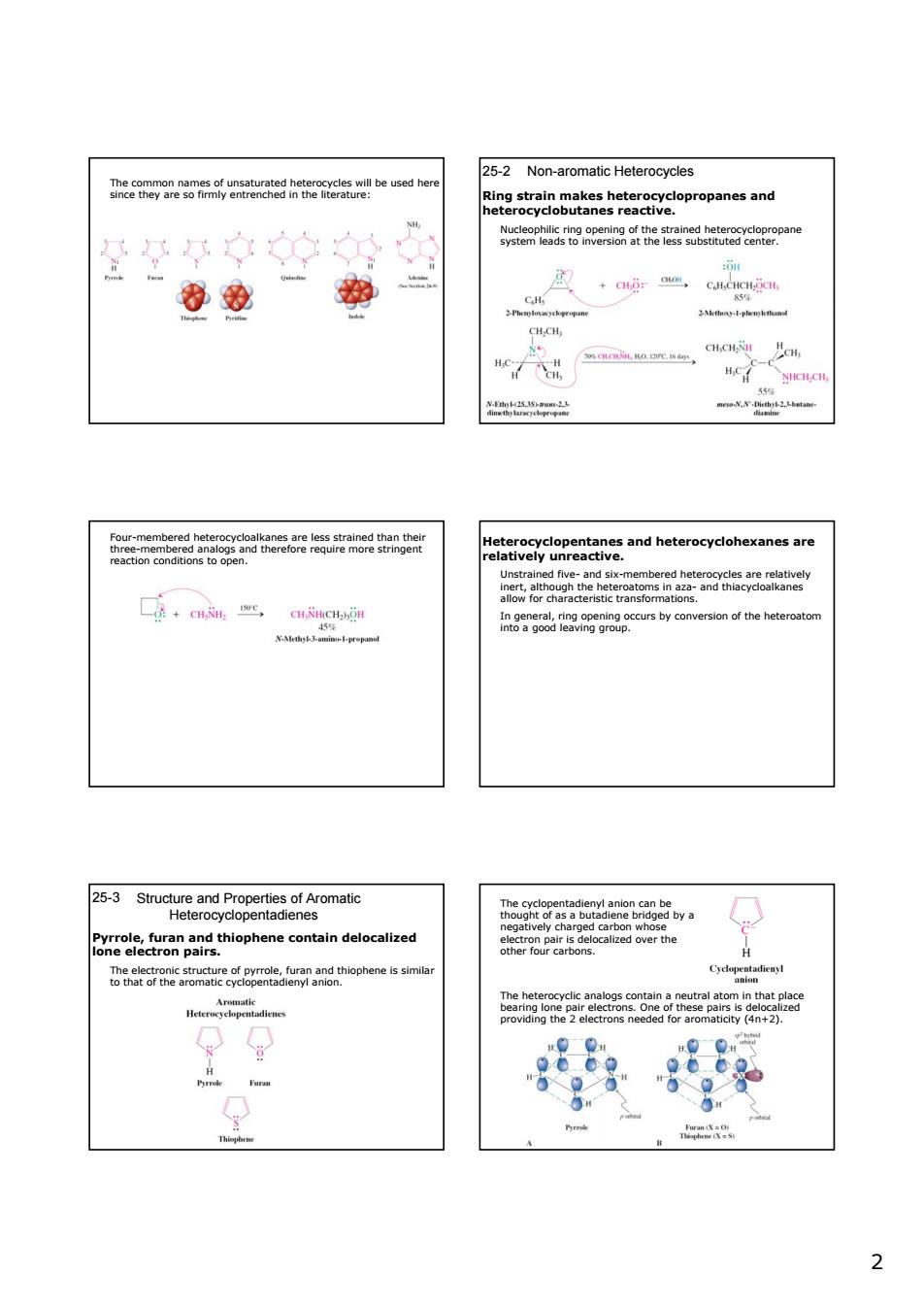正在加载图片...

annaah2nuwaee 25-2 Non-aromatic Heterocycles yiemobsoopenieatetarc2aheeS2aepan 带最 一 NH ew 25-3Sueovomaic H 22 The common names of unsaturated heterocycles will be used here since they are so firmly entrenched in the literature: 25-2 Non-aromatic Heterocycles Ring strain makes heterocyclopropanes and heterocyclobutanes reactive. Nucleophilic ring opening of the strained heterocyclopropane system leads to inversion at the less substituted center. Four-membered heterocycloalkanes are less strained than their three-membered analogs and therefore require more stringent reaction conditions to open. Heterocyclopentanes and heterocyclohexanes are relatively unreactive. Unstrained five- and six-membered heterocycles are relatively inert, although the heteroatoms in aza- and thiacycloalkanes allow for characteristic transformations. In general, ring opening occurs by conversion of the heteroatom into a good leaving group. Structure and Properties of Aromatic Heterocyclopentadienes 25-3 Pyrrole, furan and thiophene contain delocalized lone electron pairs. The electronic structure of pyrrole, furan and thiophene is similar to that of the aromatic cyclopentadienyl anion. The cyclopentadienyl anion can be thought of as a butadiene bridged by a negatively charged carbon whose electron pair is delocalized over the other four carbons. The heterocyclic analogs contain a neutral atom in that place bearing lone pair electrons. One of these pairs is delocalized providing the 2 electrons needed for aromaticity (4n+2)